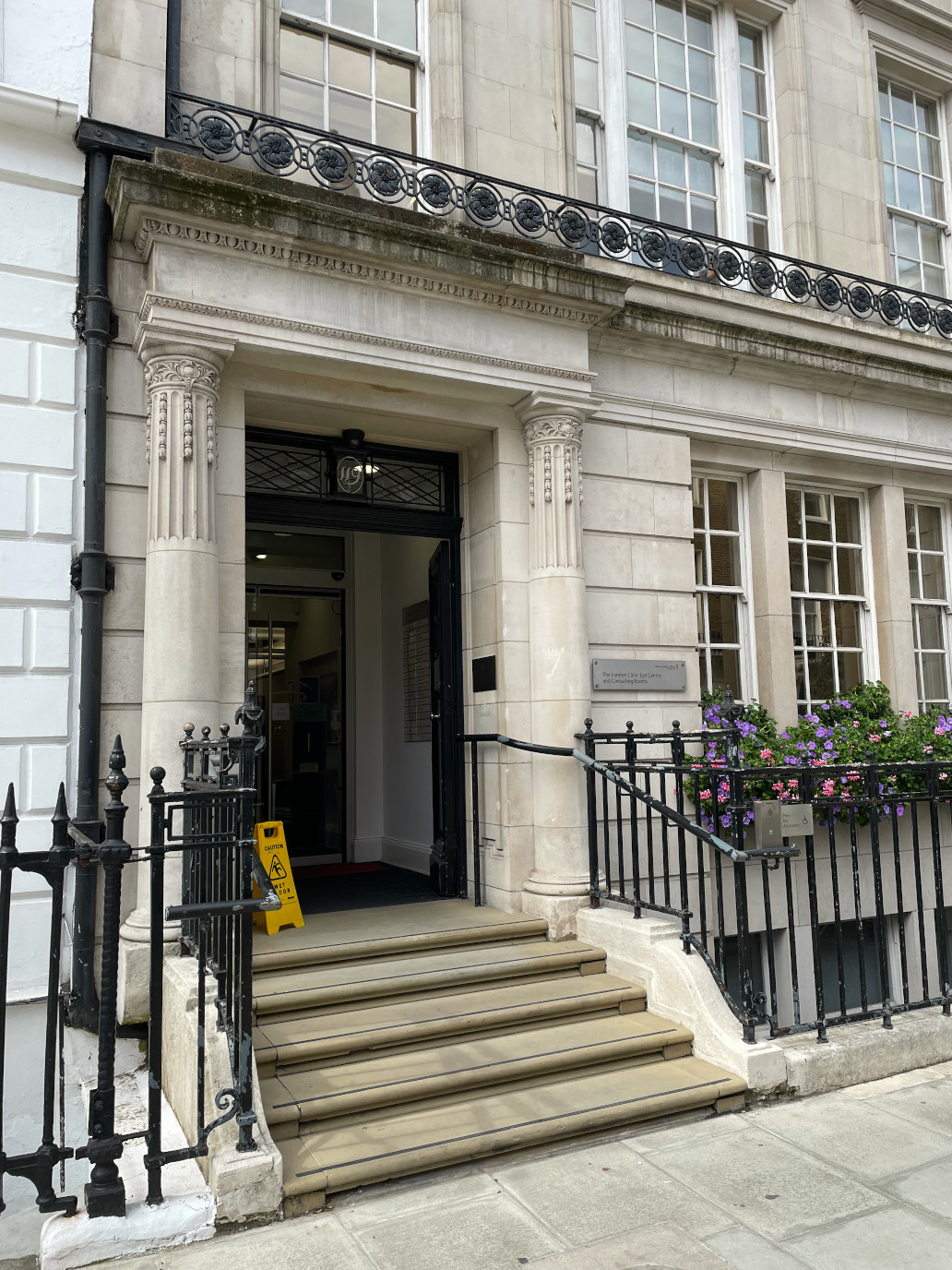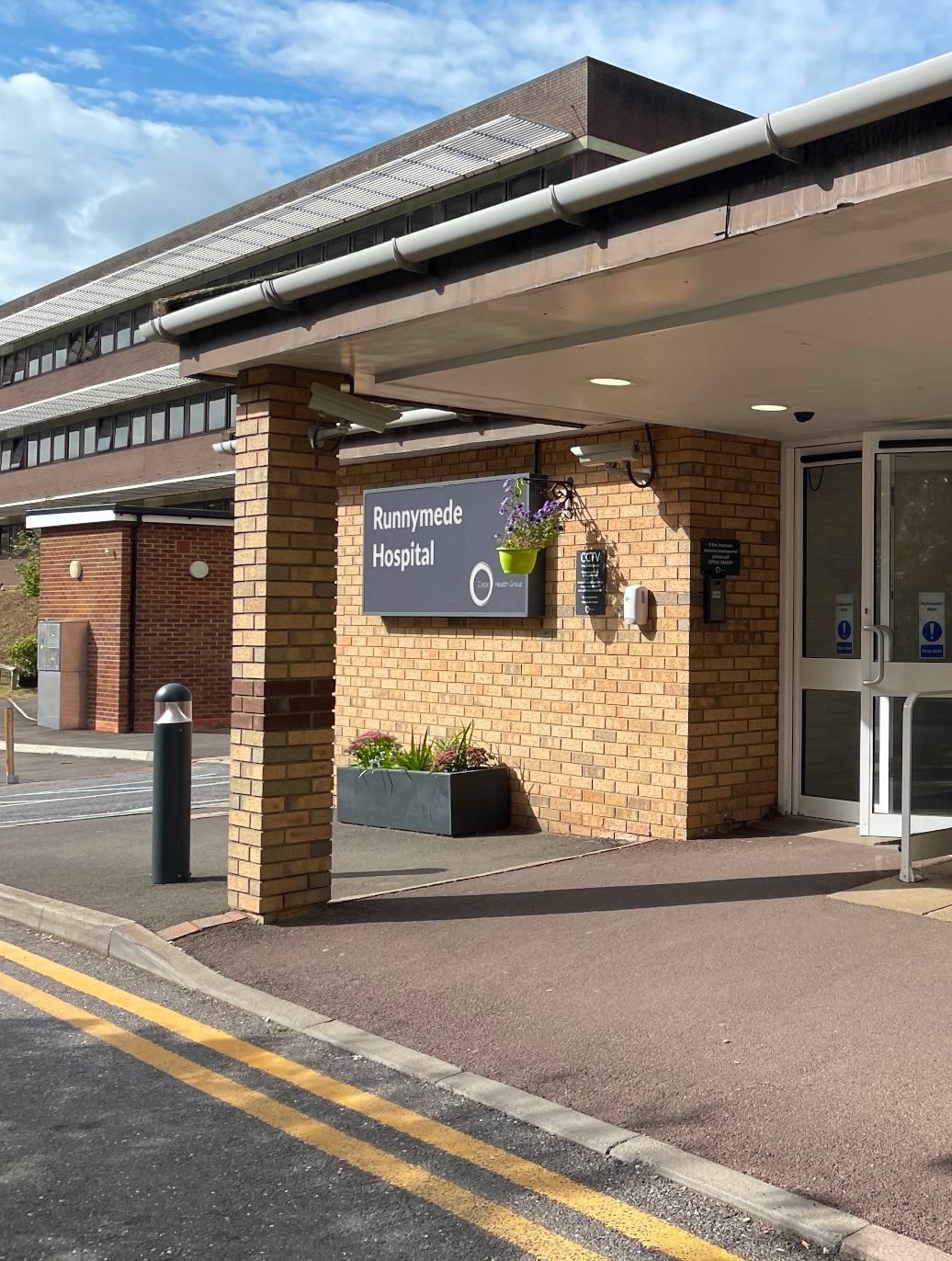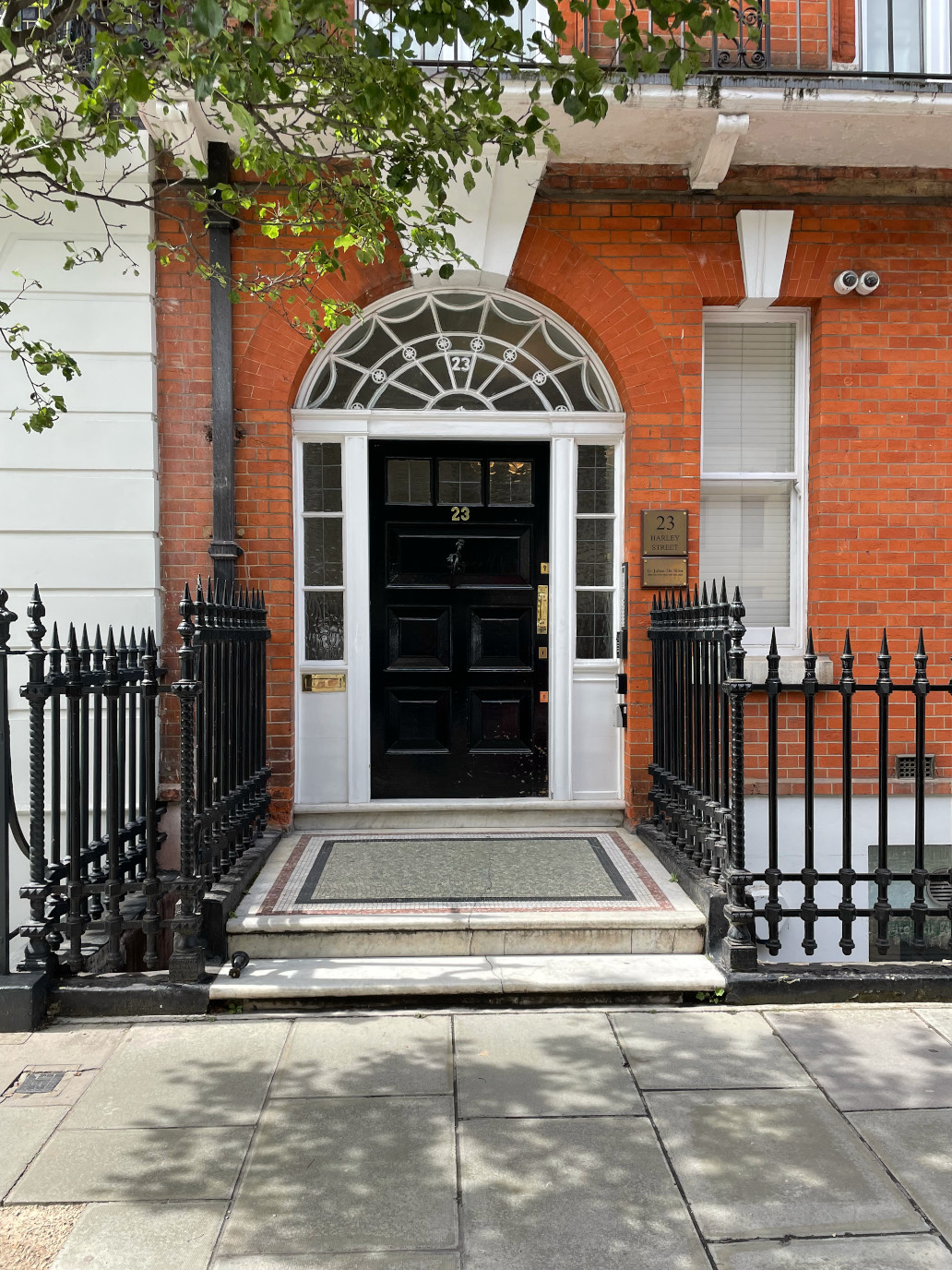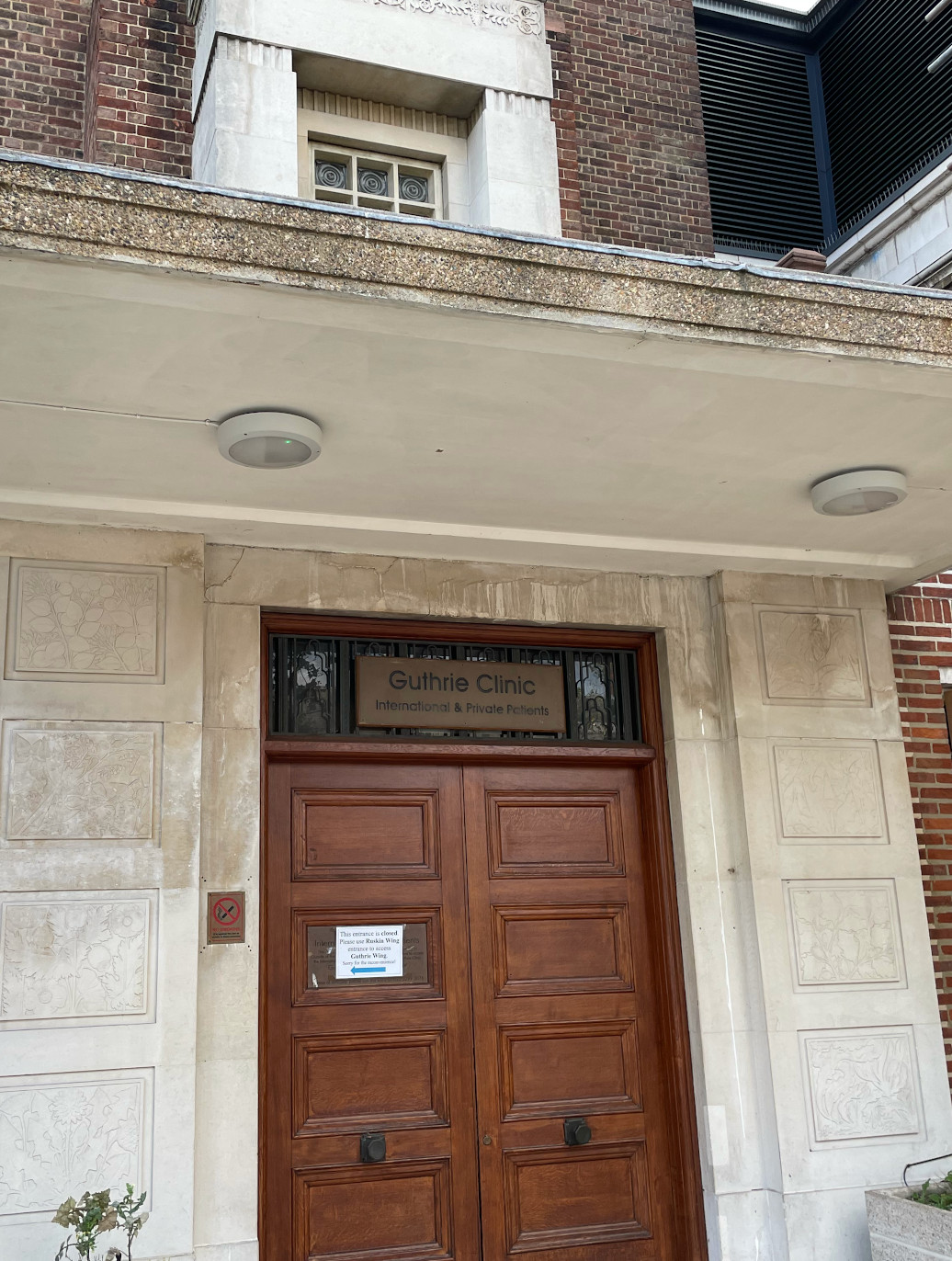What is a Trabeculectomy?
Trabeculectomy is a surgical operation which lowers the pressure inside the eye (intraocular pressure) in patients with glaucoma. This is achieved by making a small trapdoor in the white coating of the eye, known as the sclera. The fluid inside the eye known as aqueous humor, drains through the trap- door to a small reservoir or bleb just under the eye surface, hidden by the eyelid (see below). The trap-door is sutured (stitched) in a way that prevents aqueous humor from draining too quickly. The operation typically lasts between 45 and 60 minutes.
By draining aqueous humor the trabeculectomy operation reduces the pressure on the optic nerve, and this prevents further damage to the eye and further loss of vision in glaucoma.
Please note that control of the eye pressure with a trabeculectomy will not restore vision that has already been lost from glaucoma.
What is aqueous humor?
This is a fluid inside the eye. Watering of the eye is caused by tears, not aqueous humor. Glaucoma is often caused by high pressure in the aqueous humor inside the eye. Trabeculectomy reduces the eye pressure by draining aqueous humor from the eye.
The aqueous humor that drains through the trabeculectomy accumulates in a reservoir between the sclera and the surface layer of tissue (the conjunctiva) that covers the eyeball.
What is the appearance of the eye after a trabeculectomy?
These lenses have a single focus point and in most cases patients may use this for the distance. This will however mean that reading spectacles are required for near work, such as using a computer screen or reading.
This is a fluid inside the eye. Watering of the eye is caused by tears, not aqueous humor. Glaucoma is often caused by high pressure in the aqueous humor inside the eye. Trabeculectomy reduces the eye pressure by draining aqueous humor from the eye.
The aqueous humor that drains through the trabeculectomy accumulates in a reservoir between the sclera and the surface layer of tissue (the conjunctiva) that covers the eyeball.
Initially the eye will be red and swollen to a variable degree after surgery. The eyelid may also droop partially. This resolves over a period of weeks to months.
The drainage bleb is not usually visible to the naked eye after the trabeculectomy operation. The bleb may, however, be seen if the patient looks in the mirror and raises the upper eyelid.
After surgery, most patients feel no sensation from the presence of the drainage bleb.
Prior to undergoing surgery, patients are asked to continue all drops and tablets in accordance with their normal treatment regimen until the morning of the operation. Blood thinning medications such as Aspirin, Warfarin and Clopidogrel should also be continued. Patients who are taking Warfarin are advised to have their level (eg. INR) checked at least 2 weeks prior to surgery to ensure it is within the correct therapeutic range.
If patients opt to have the surgery performed under general anaesthesia, a preoperative assessment of their general health will be carried out just before surgery. Underlying medical conditions including cardiac disease, uncontrolled high blood pressure or diabetes will need to be addressed prior to scheduling of surgery.
Trabeculectomy is often performed under local anaesthesia, though it may also be performed under general anaesthesia. The local anaesthetic takes the form of an injection around the eye. This helps to minimize excessive eye movement as well. Occasional the surgeon or patient may request for mild sedation to be used as well which can help relax anxious patients.
Patients may also hear the surgeon speaking to the scrub nurse and other members of the surgical team whilst under anaesthetic.
During the surgery, Mitomycin C may be applied to the surface of the eye for usually a few minutes. Mitomycin C is a drug that was originally used to treat cancer, but it is also used in glaucoma surgery to reduce scarring. Scarring prevents the trabeculectomy from functioning in the long term, as it can shut off the trapdoor that has been created. The Mitomycin C is then washed away from the eye with sterile water so that no residual drug remains.
Patients are usually discharged home from hospital either the same day as the surgery or the day after.
All patients need to be examined one day after surgery so a further visit to the hospital the following day is required for those having day case surgery.
Patients are usually advised to ask a friend or relative to accompany them home after surgery, especially patients who have poor sight in the unoperated eye or those who have had general anaesthesia.
It is normal for the vision to be blurred and the eye to be uncomfortable after surgery. The period of blurring is variable. The vision may be particularly blurred for 1-2 weeks following surgery, and then start to improve. It can take 2-3 months for the eye to feel completely normal and the vision to stabilise completely.
The patient is usually requested to wear a shield at night for the first 2 weeks or so; this is to prevent any accidental harm to the operative site whilst sleeping.
Soreness in the eye after surgery is partly due to the surgery itself, and partly due to the stitches. The stitches do not dissolve and are usually removed in the clinic 2 to 3 weeks after surgery (this takes 2 – 3 minutes in clinic with the eye anaesthetised using eye drops). The eye usually starts to feel more comfortable after the sutures have been removed.
Eye drops will be prescribed to use regularly after surgery. These start the day after surgery, after the post-operative examination. It is not usually necessary to use eye drops the first night after the surgery. Acetazolamide (Diamox) tablets or any glaucoma medication to the operated eye should also be stopped the night after surgery unless advised otherwise.
It is important that any eye drops for the unoperated eye are continued unless advised otherwise.
The postoperative eye drops will usually consist of an antibiotic (eg.chloramphenicol) and anti-inflammatory steroid (eg. dexamethasone). The steroid eye drop will initially be used intensively (every 2 hours or about 8 times daily) and the antibiotic four times daily, during the day only.
Patients are given a supply of postoperative eye drops on leaving the hospital; these should last one month. The postoperative eye drops will normally need to be taken for 2 to 3 months. Patients are advised at each post-operative visit
whether a change in the dosage of drops is required. The drops should not be stopped or the dosage changed without consulting the doctor.
Patients are usually seen once weekly for the first 4 weeks or so, and may be seen more frequently if the eye pressure is either too high or too low.
During this time sutures may be removed to adjust the pressure and additional injections of steroids or 5-Fluororacil (a drug that reduces healing), may be given around the eye to counteract the body’s natural healing process. The injections are performed after the administration of anaesthetic eyedrops, during the clinic appointment itself.
Patients who live a long distance from the hospital will likely be able to alternate postoperative appointments between their surgeon and a local ophthalmologist.
It is important to avoid strenuous activity during the early post-operative period including swimming, tennis, jogging and contact sports.
Passive activities, such as watching the television and reading, are fine as these will not harm the eye.
The duration of time off work will depend on a number of factors such as the nature of the patient’s employment, the state of the vision in the other eye and the pressure in the operated eye.
Typically someone working in an office environment would require 2 weeks off, if the postoperative course is smooth. Someone whose occupation involves heavy manual work or work in a dusty environment may require a month or more (e.g. construction workers, farmers).
It is usually possible to restart contact lens wear around 8 weeks and sometimes sooner after trabeculectomy surgery. Not everyone can continue to wear contact lenses after trabeculectomy surgery, so this is something to consider before having a trabeculectomy operation. If contact lens wear is
essential, then other alternatives to trabeculectomy surgery should be considered.
Whether or not contact lenses can be worn after surgery depends on the appearance and shape of the drainage bleb. The surgeon will usually be able to advise on this by 6 -8 weeks after surgery.
Although it is safe to fly after surgery, patients should bear in mind that their surgeon will wish to see them for a number of post-operative visits to ensure that the eye pressure is at the correct level.
In most cases, it takes 2 to 3 months for the eye to feel completely normal and sometimes longer in more complicated cases. At this point a refraction (spectacle test) is usually required as the spectacle prescription may have changed slightly from the pre-surgery prescription.
Success rates
Long-term studies suggest that most people will achieve a low eye pressure without the need for additional glaucoma medication after trabeculectomy surgery. In clinical trials, trabeculectomy has proven consistently more successful at lowering intraocular pressure than either medication or laser.The success rate of trabeculectomy at controlling the pressure varies according to a number of risk factors including the type of glaucoma, previous surgery, race, age and other conditions.
Uncommonly, a patient will develop a pressure that is too low, requiring further surgery to elevate the pressure.
Severe complications are fortunately rare.
A very low eye pressure is the biggest risk in the early period after surgery. Although it is often painless, it may be associated with a dull aching feeling or a throbbing sensation within the operated eye. Patients who notice severe blurring of vision, distortion or a fluctuating curtain in their visual field should
attend for an urgent follow up consultation to have the eye assessed. This complication may require a return to hospital. A recent paper published by Kirwan et al (Ophthalmology 2014) showed this happens in approximately 7% of cases.
The risk of serious infection or serious bleeding in the eye from trabeculectomy is rare with approximately 1 in every 500 cases being affected.
The longer-term risks of trabeculectomy are infection, discomfort, cataract and change in glasses prescription. Low pressure occasionally develops in the longer term, but generally the risk of low pressure is highest in the early postoperative period rather than later.
While the risk of infection after surgery is rare, there is a very small on-going life-time risk that the drainage bleb might become infected (about 1 in 1000).
If a patient who has had a trabeculectomy subsequently develops a red, sticky or painful eye, it is important they have their eye examined immediately by an ophthalmologist, as this may be a sign of an infection. While infection is rare, it may be very serious and can result in visual loss. The earlier any infection is treated, the better the outcome for the eye.
The drainage bleb may become large. Occasionally this may extend below the eyelid or cause the eyelid to be raised or droopy.
A large drainage bleb may cause interference with the tear film on the eye surface, and can create a feeling of discomfort or drying of the eye. This occurs in about 10% of patients and is usually treatable with artifical tear drops. Occasionally, the discomfort is more severe and requires surgery to make the drainage bleb smaller.
In patients who have not had cataract surgery, there is a risk that the trabeculectomy operation can accelerate the progression of cataract in 35% of cases.
Changes in glasses prescription
Most patients require a small change in their glasses prescription after trabeculectomy. Patients should refrain from changing their glasses until at least 3 months after the surgery and only once the eye pressure has stabilised. It is advisable to check with the doctor before changing glasses. Rarely, a patient who does not require glasses before surgery develops a need for glasses after surgery.
Where to find us

The London Clinic Eye Centre

The Circle Hospital

23 Harley Street


